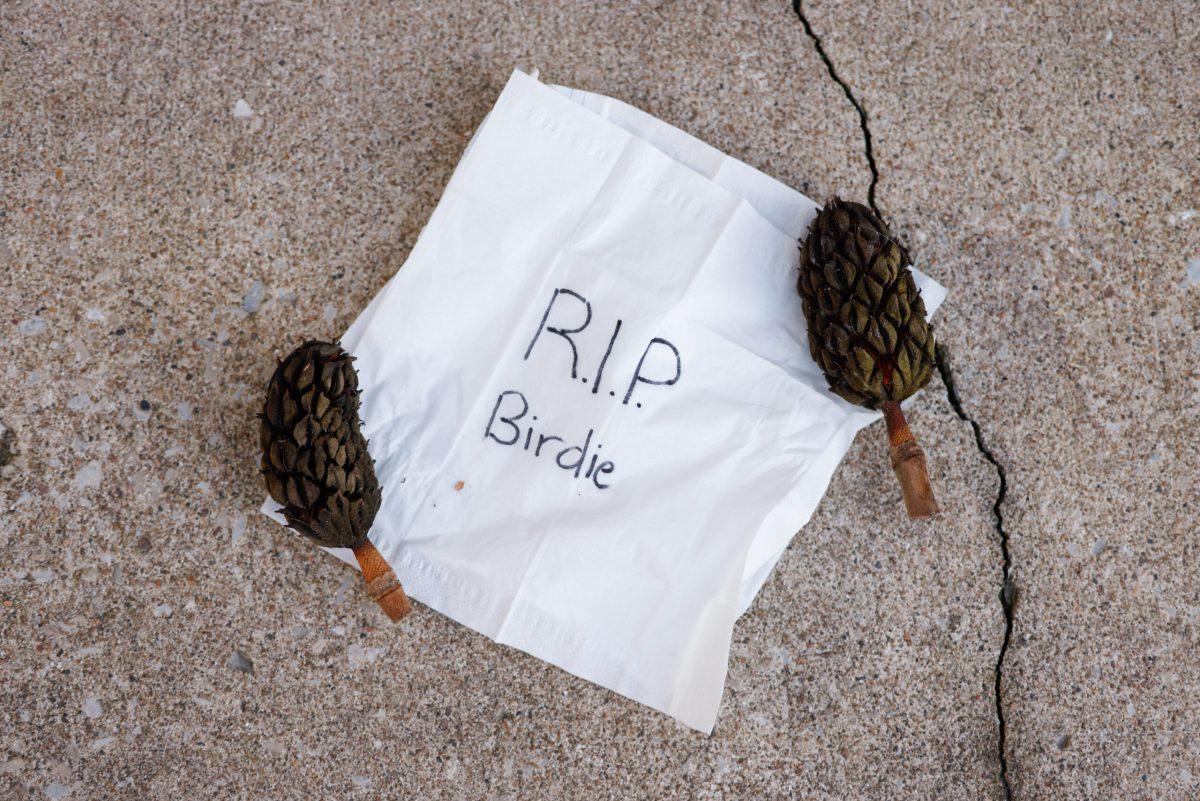
Birds are colliding with large glass windows on buildings including the MU Student Center
Fall migration season has hit its peak and southward bound birds are making it to the University of Missouri, only to fall victim to the extensive glass buildings. Over ten birds have been found dead around the MU Student Center. Nearly one billion yearly bird deaths can be attributed to collisions with man-made structures, according to the U.S. Fish and Wildlife Service. Shrubbery, trees and sunlight are reflected from the glass and make the hard glass panes look like their natural habitat, so birds assume that it’s a through passage. These collisions usually result in immediate death. Lamp posts and bright lights from buildings at night also distract birds. The American Bird conservancy encourages people to place lampshades over lampposts and to minimize lighting at night.To combat the issue, there are specialized window films MU can obtain. Some are even UV light dependent and invisible to the human eye, according to the American Bird Conservancy. Ella Witzman, President of the MU Student Chapter of The Wildlife Society, talked about a video she saw of an American Woodcock walking down the street in Chicago. The bird collided with a window after getting sidetracked from the internal building lights. She mimicked the sound the Woodcock makes and explained how she can identify many more birds and their calls. While sitting outside the Student Center for the interview, she named a few birds that flew around.“[Birds] are going to gravitate more towards big sources of trees, shrubbery, any plant cover that they can find,” Witzman said. “Obviously we have a lot of that here on campus… If these birds continue to fly through here, we’ll see the numbers of population for some of these birds decreasing sharply.” Structure collisions aren’t just endangering birds, but increasing health risks at MU. A case of Bird Flu appeared in Missouri late September. It is transmitted through birds’ bodily secretions. An infected bird can also contaminate the surface it rests on. Witzman said students should not touch their eyes, mouth or nose if they come in contact with a dead bird on campus.As a whole, the Wildlife Society aims to create opportunities for growth and education in wildlife and conservation. Currently, they are encouraging students to track the dead birds they find on iNaturalist, a widespread platform that nature-enthusiasts can use to record and share data. They are also hoping to hold conversations with the Missouri Students Association in the future. Senator of the Missouri Students Association, Kate Downey, explained that MSA intends to draft legislation that demands the university to take more decisive action in preserving campus wildlife populations. “As a senator, I feel obligated to urge the university to do something about it,” Downey said. “The least we could do is ask that all new buildings are constructed with the safety of birds in mind.” Large reflective windows could be outfitted with bird-safe glass or decals during migration season. Witzman also said possible solutions to the issue would be to put decorations on the clear windows. “Chalk paint, themed stickers and tiger stripes are also great ways to help,” Witzman said. “Painting the windows would be a great opportunity for clubs on campus to advertise themselves.”The American Institution for Conservation notes how conservation is a pertinent topic of discussion in the modern day. In combating the bird issue, a plethora of resources aren’t required and the solutions to increase conservation are accessible. “Birds are a lot cooler than some people think,” Witzman said. “They’re these tiny little birds that are traveling hundreds of thousands of miles.” The Wildlife Society holds meetings every second and fourth Thursday of each month. Participants are attempting to produce change at MU and encourage the community to stay aware of the threat certain infrastructure poses to migrating birds. Efforts to protect birds flying through the MU Campus are in motion. Their well-being is dependent on proactive measures. Edited by Julianna Mejia | [email protected] by Ava Mohror and Hannah Taylor | [email protected] by Emily Skidmore | [email protected]